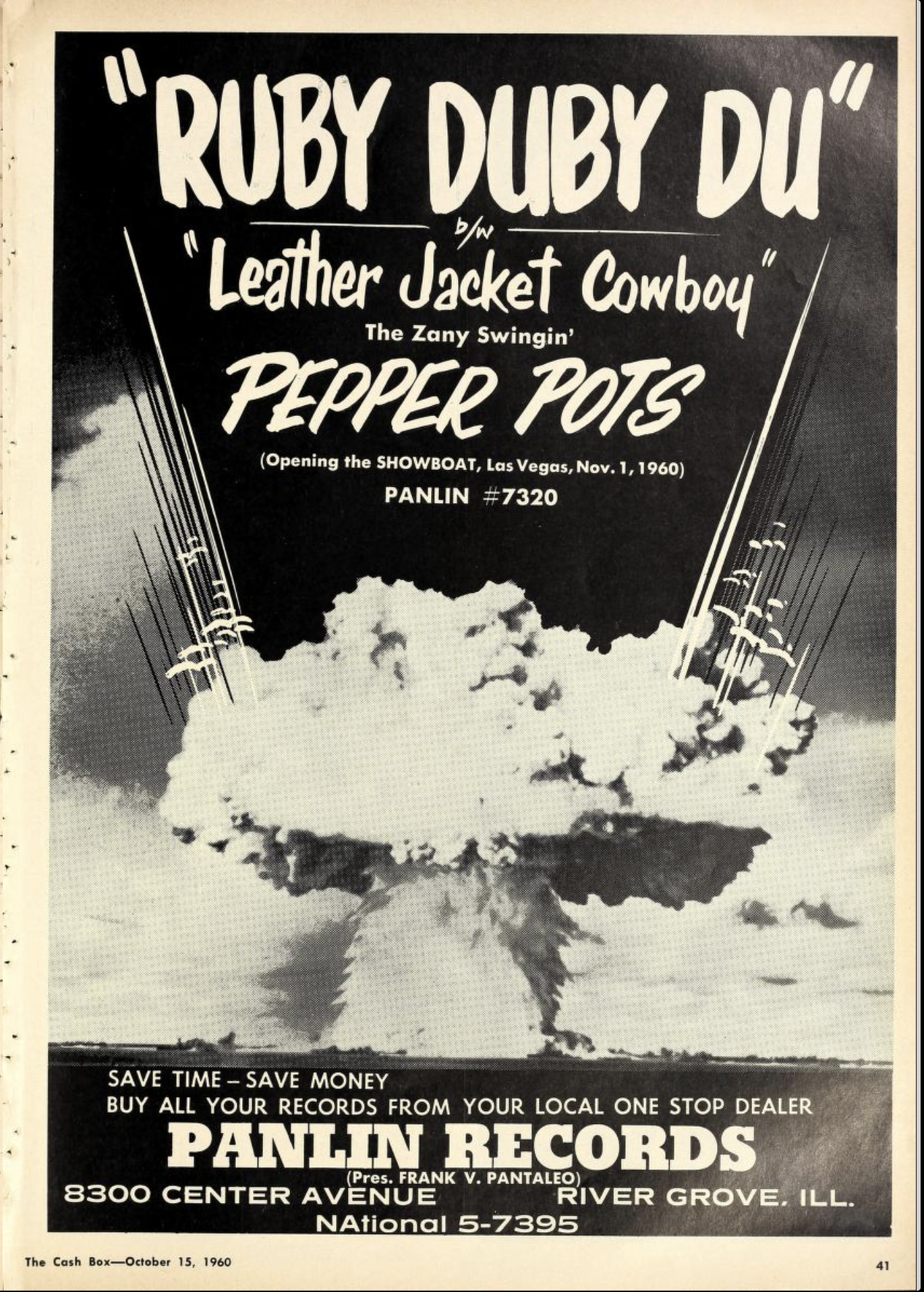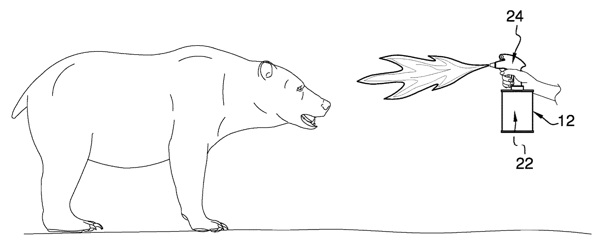Weapons
Tree Ornament Target Practice
Gather the family round for a holiday game of shoot the Christmas tree.From Patent No. 11,918,133 (granted Mar 5, 2024):

Posted By: Alex - Tue Dec 31, 2024 -
Comments (0)
Category: Patents, Weapons, Christmas
Miss Bombsight
In 1944, U.S. airmen selected Kathleen O'Malley as "the girl we'd most like to see in our bombsight."Being in the bombsight doesn't sound like a good thing.
Kathleen O'Malley's IMDB page. Her earliest credited role was in 1926 when she was thirteen months old. Her final one was in 1998. That's quite a career.
More info: wikipedia

Santa Rosa Press Democrat - Nov 24, 1944
Posted By: Alex - Thu Oct 17, 2024 -
Comments (0)
Category: Awards, Prizes, Competitions and Contests, Military, 1940s, Weapons
Neutron Radiation Wall
Physicist Samuel T. Cohen is credited with inventing the neutron bomb — a nuclear weapon designed to minimize blast damage but maximize the release of radiation, so that it would kill people but preserve infrastructure.Cohen later came up with the idea of a neutron radiation wall. This would be a wall of ionizing radiation that would kill anyone who passed through it. He suggested that Israel could build a neutron radiation wall along its border to protect itself from invasion.
He described how this wall would work in a March 1984 article in Reason magazine:
Briefly, this is how such a barrier scheme would work:
During peacetime, the reactors (employed underground, for protection and safety) are operated on a continual basis, as are our power reactors. The neutrons produced by the fission reactions escape into a solution containing an element that, upon absorbing the neutrons, becomes highly radioactive and emits gamma rays (very high energy X-rays) at extremely high intensity. The radioactive solution is then passed into a series of pipes running along the barrier length in conjunction with conventional obstacle components—mines, Dragon's Teeth, tank traps, barbed wire, etc. To the rear of the pipes and obstacle belts is a system of conventional defensive fortifications. (The obstacles, the firepower from the fortifications, and tactical air power all serve to impede the rate of advance of the attacker, increasing the attacker's exposure to the gamma radiation. Vice versa, by quickly incapacitating the attacker, the radiation serves to make it difficult, or even impossible, for the attacker to remove the obstacles and assault the fortifications.) The width of the entire defensive system need be no more than a few miles.
The gamma ray field in the immediate vicinity of the obstacle zone readily can be sufficiently intense that several minutes' exposure will produce incapacitation and ultimately death. However, at a distance of, say, 1,000 yards from the pipes, the radiation intensity is so reduced that people are perfectly safe. In fact, a person could stand all day at this distance without putting himself in jeopardy.

Posted By: Alex - Wed Sep 25, 2024 -
Comments (3)
Category: Atomic Power and Other Nuclear Matters, 1980s, Weapons
Please don’t throw explosives in the trash
A very British way of asking people to not blow up garbage workers:
Derby Evening Telegraph - May 14, 1966
Posted By: Alex - Sun Sep 08, 2024 -
Comments (1)
Category: 1960s, United Kingdom, Weapons
Bomb Proof Eye Guards

Mechanix Illustrated - Mar 1941
Posted By: Alex - Wed Jul 10, 2024 -
Comments (1)
Category: War, Weapons, 1940s, Eyes and Vision
Bulletproof Clipboards
Ballistic Systems Co. sells bulletproof clipboards, starting at $40. They boast that they've sold "over 170,000 clipboards to law enforcement officers nationwide."While I'm sure the clipboards really are bulletproof, I'm skeptical about whether they'd be much help in preventing someone from getting shot. Wouldn't the force of a bullet simply knock the clipboard out of their hands?
Contrast this with the Clipboard Gun we've previously posted about.
via Book of Joe


Posted By: Alex - Wed May 29, 2024 -
Comments (1)
Category: Police and Other Law Enforcement, Weapons
My Boomerang Won’t Come Back

Posted By: Paul - Fri Apr 26, 2024 -
Comments (0)
Category: Racism, Stereotypes and Cliches, 1960s, Australia, Weapons
Forehand Guns
The choice of dog killers and stagecoach robbers.
Recreation magazine - Aug 1899

Recreation magazine - Dec 1899
Posted By: Alex - Wed Feb 28, 2024 -
Comments (5)
Category: Advertising, Weapons, Nineteenth Century
Follies of the Madmen #587
We have seen instances of this theme before: a giant nuclear mushroom cloud does not indicate death and destruction, but rather it shows your product is powerful.
Posted By: Paul - Wed Feb 07, 2024 -
Comments (0)
Category: Death, Music, Advertising, Atomic Power and Other Nuclear Matters, 1960s, Weapons
Anti-Bear Flamethrower
David Girag of Glendale, CA recently was granted a patent (11,877,572) for a "portable flame propelling device" to deter an attack by an animal "such as a bear, lion, dog, or human."I think this would just anger a bear, and then cause a forest fire.

Posted By: Alex - Tue Jan 30, 2024 -
Comments (3)
Category: Animals, Fireworks and Pyrotechnics, Patents, Weapons

| Who We Are |
|---|
| Alex Boese Alex is the creator and curator of the Museum of Hoaxes. He's also the author of various weird, non-fiction, science-themed books such as Elephants on Acid and Psychedelic Apes. Paul Di Filippo Paul has been paid to put weird ideas into fictional form for over thirty years, in his career as a noted science fiction writer. He has recently begun blogging on many curious topics with three fellow writers at The Inferior 4+1. Contact Us |




